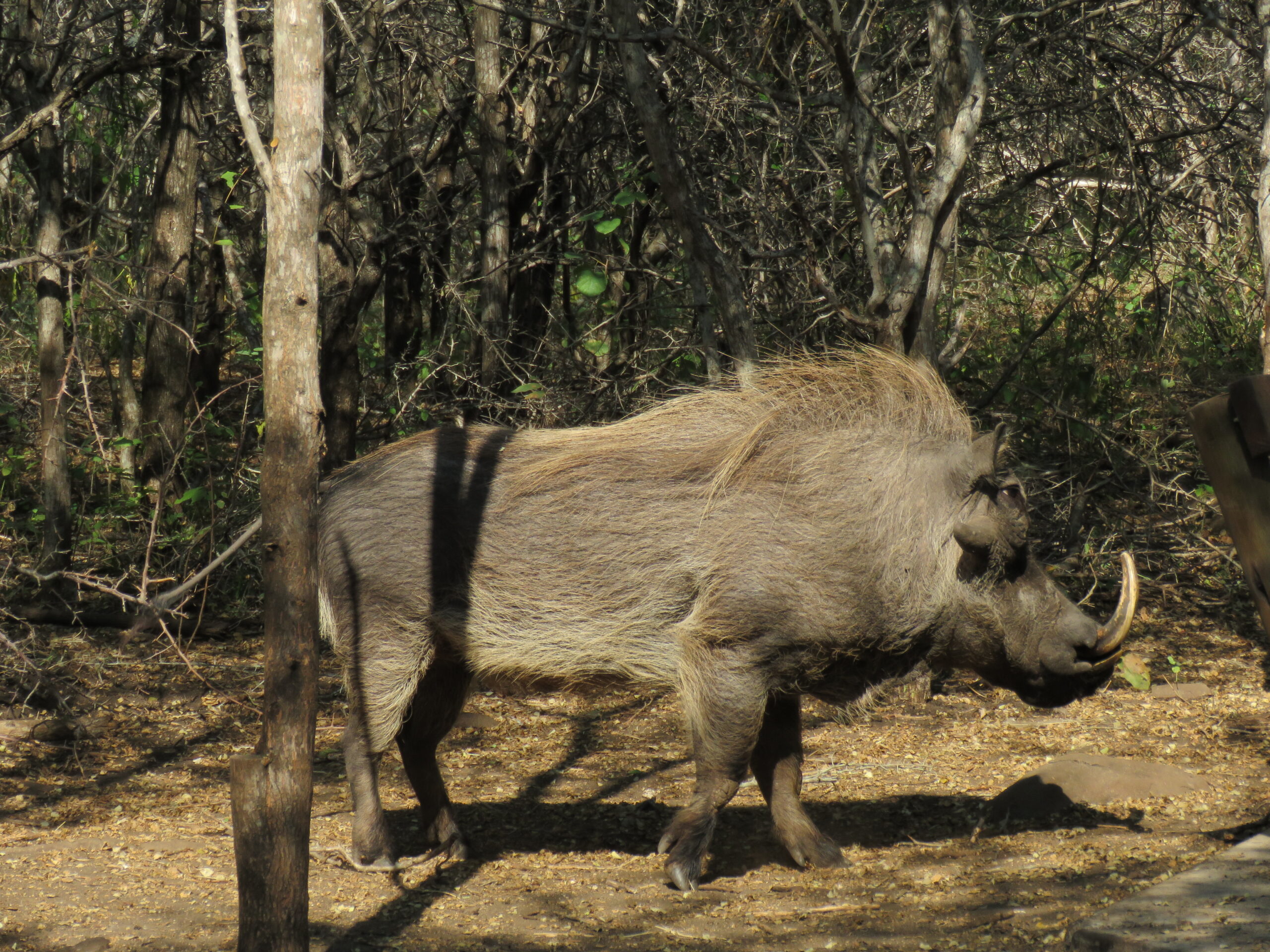
Each night since we received the trail cam a week ago, we have been hopeful that somehow one night, it would take a photo of the porcupine that Tom has seen six times and me, once. When I got up after Tom, I asked the new question I’ve been asking him each morning, “Did you look at the trail cam photos? Anything exciting, honey?” He’s said each day, “Nothing unusual.” This morning he said, “You’ll have to see for yourself.” It was at that moment I knew. The porcupine showed up in the trail cam photos. I couldn’t shower and get dressed quickly enough.
Holding my breath, I inserted the card reader with the camera data card into my laptop, a fresh cup of coffee in hand, and quickly scrolled through the photos to find the photo above. No, it’s not as straightforward as we would have liked. I did my best editing it a little to enhance the image. But, in the dark, at night, it was the best photo the trail cam could get. Nonetheless, we’re thrilled. Based on how often Tom has seen it, this porcupine may be a regular in our garden. In the past month, collectively, we’ve seen it seven times. Sure, there’s a possibility it could be more than one porcupine, but most likely, it’s the same one over and over. Porcupines are not territorial as per this statement:
“Social system – Porcupines are solitary during much of their lives. Exceptions occur during the winter when as many as 12 may den communally and during courtship. Porcupines are not territorial, although an individual may drive others from a tree in which it is feeding during the winter.”

Facts about porcupines from this site:
“Porcupines are large, slow-moving rodents with sharp quills on their backs. They are found on every continent except Antarctica. Scientists group porcupines into two groups: Old World porcupines, which are found in Africa, Europe, and Asia; and New World porcupines, which are found in North, Central, and South America. The North American porcupine is the only species found in the United States and Canada.
Sharp quills
All porcupines have a few traits in common. The most noticeable trait is the long, sharp quills that cover their bodies. According to National Geographic, some quills can get up to a foot (30 centimeters) long, like those on Africa’s crested porcupine.
Porcupines use the quills as a defense. They may shake them, which makes them rattle, as a warning to potential predators. If that doesn’t work, they may charge backward into the predator. According to the Animal Diversity Web, the quills are loosely attached but cannot be thrown or projected. Some quills have scales or barbs that make them very hard to remove. Once a quill is lost, it isn’t lost forever. They grow back over time. A North American porcupine can have 30,000 or more quills, according to National Geographic.

Size
The largest porcupine is the North African crested porcupine. It grows up to 36 inches (90 centimeters) long. The smallest is the Bahia hairy dwarf porcupine. It grows up to 15 inches (38 cm) long. Porcupines weigh 2.5 to 77 lbs. (1.2 to 35 kilograms), depending on species, and their tails can grow up to 8 to 12 inches (20 to 30 cm).”
When and if we’ll ever get a daylight photo of a porcupine remains to be seen. We’ll continue to check out the trail cam photos every day to see what other treasures we can see that enter the garden in the evening. With winter approaching and darkness falling earlier each evening, we look forward to many more exciting trail cam photos, along with the photos we take daily from the veranda and when driving in the park.

Next week, when the ten-day school holiday period ends, and it’s no longer necessary to make an appointment to enter, we’ll be heading back to Kruger National Park for more stunning wildlife sightings, which we look forward to sharing here. Our permanent Wild Card (year-long entrance pass) has arrived, and we’re chomping at the bit to get back out there.
Tonight, we’re heading to Jabula for dinner with dear friends Linda and Ken, who are here in Marloth Park right now. It’s been several weeks since they’ve been here, and we have plenty of catching up to do!
Have a pleasant weekend filled with exciting surprises!
Photo from one year ago today, April 30, 2020:
 |
| Female lions lounging in the shade, re-posted one year ago while in lockdown in India. For more photos, please click here. |
